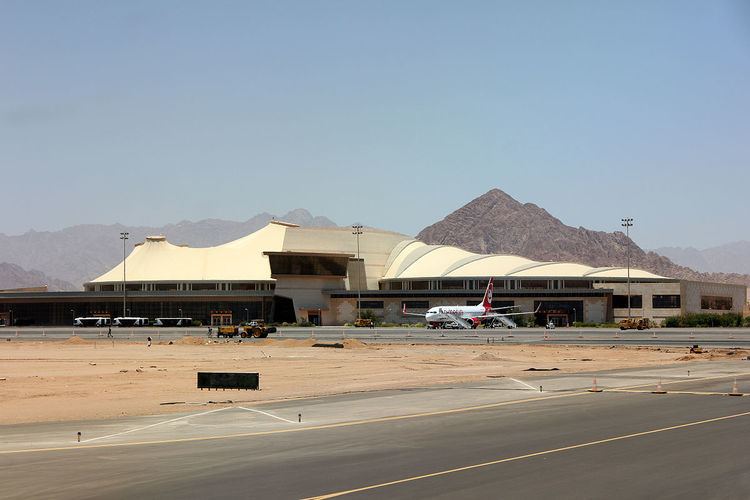Operator Government 04L/22R 3,081 Elevation 44 m | Elevation AMSL 143 ft / 44 m Code SSH Phone +20 69 3601140 | |
 | ||
Airport type Public (former Military) Hub for Air CairoAMC AirlinesEgyptAir Express Website sharm-el-sheikh-airport.com Address Qesm Sharm Ash Sheikh, South Sinai Governorate, Egypt | ||
Sharm El Sheikh International Airport (Arabic: مطار شرم الشيخ الدولي Maṭār Sharm El Sheikh El Dawli) (IATA: SSH, ICAO: HESH), is an international airport located in Sharm El Sheikh, Egypt. It is the third busiest airport in Egypt after Cairo International Airport and Hurghada International Airport.
Contents
- Sharm el sheikh international airport egypt 2012
- Overview
- Terminal 1
- Terminal 2
- Airlines and destinations
- Accidents and incidents
- References
Sharm el sheikh international airport egypt 2012
Overview
The airport was opened on May 14, 1968 as an Israeli Air Force base. After the signing of the Egypt–Israel Peace Treaty in 1979 and Israeli withdrawal from the Sinai Peninsula, it was reopened as a civilian airport.
In 2008 the Egyptian Airports Holding Company (EAHC) announced plans to build a third terminal at the airport. The company expects to receive design offers before the end of September 2008. EAHC Director Ibrahim Mannaa said that it is a move to meet the sizeable increase in passengers numbers at the airport, which exceeded 28% during the first eight months of 2008.
The largest regular aircraft operating into the airport was the Boeing 747-400 by Transaero Airlines (from Moscow); Transaero ceased operations in October 2015. British Airways operated the only regular scheduled Boeing 777-200ER service (from Gatwick Airport); this has now ceased due to concerns in the aftermath of Metrojet Flight 9268.
In 2008, the Egyptian Airports Holding Company announced plans to build a third new terminal at the airport. In July 2009 the Egyptian Holding Company for Airports and Air Navigation (EHCAAN) signed a contract with Spanish construction designers Pointec for the third terminal. The terminal was planned to double the airport's capacity from 7.5 to 15 million passengers per year. The project's primary costs were estimated at $350 million. The design phase was due to be completed by early 2010. International contractors then were invited for an open tender to construct the terminal which was scheduled to be completely constructed by 2015. However, as of September 2016 construction has not commenced yet.
Terminal 1
On 23 May 2007, the airport's second terminal was inaugurated with a capacity for 5 million passengers per year. The two-level 43,000 square metres (460,000 sq ft) terminal features 40 check-in counters and is designed to cater to a large number of international and chartered flights. It has two domestic and six international gates, all of which exit to remote stands. The terminal comprises three building components: two circular-shaped halls fused together by a wedge-shaped intermediate space dubbed 'the boat'. 'The boat' serves as a passenger transit hub housing passport control, duty-free, and VIP areas as well as cafes/restaurants. The halls, in stark textural contrast to the solid mass of 'the boat', feature airy, billowing tent-like roofs inspired by the indigenous Bedouin culture.
Terminal 2
Although known as 'Terminal 2' this is actually the airport's original terminal building. The building underwent a complete modernisation programme in 2004 and has a passenger handling capacity of 2.5 million passengers per year. Since the auguration of Terminal 1 in 2007 most airlines have shifted operations to the new building.
In December 2016 Egyptian Airports Company announced plans to extend Terminal 2. EAC plans to expand Terminal 2 and increase its capacity by two million passengers per year, thus taking the total capacity of the airport to 9.5 million. This also includes the construction of a new runway and 40 new airsides.
